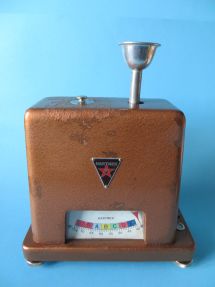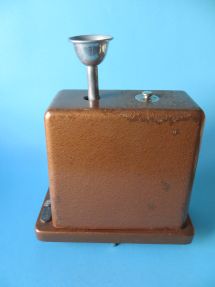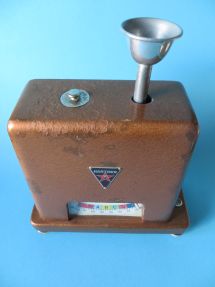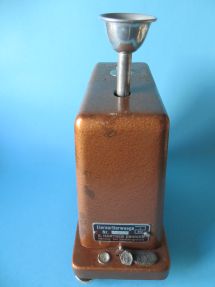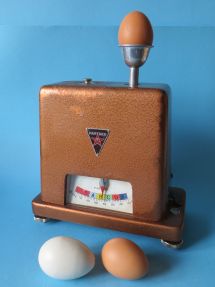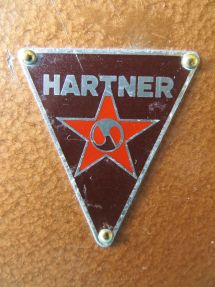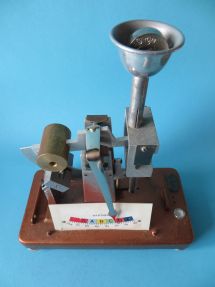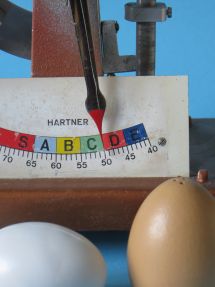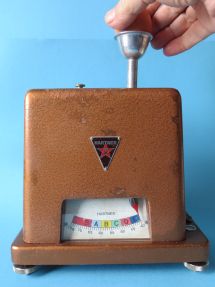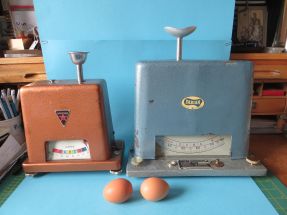prevent damage. The transport lock must be activated by turning the red knob at the bottom of the base plate, while in the meantime the egg scale should be loaded at a value between 55 and 60 grams. This can not be called really convenient. This egg grader has - and this is very special - a magnetic damping. This shortens the egg weighing time because the scale is quickly stopped. The magnetic damping already was applied in the egg grading scale of August Fabian, see there. This type of egg graders was calibrated annually. The test weight of 50 grams was calibrated also and also received a verification stamp when approved. The house fairly protects the mechanism and the pointer and the dial are behind glass. Yet, quite some dust and dirt comes inside in the course of time, as can be seen in some photos. The dimensions of the base plate are 21.8 x 11.1 cm. The scale house is 20.5 cm high. The height including the egg cup is is 26.7 cm. The Hartner egg scale complete with its test weight weighs itself 2357 grams. The nameplate at the right side indicates the function: EIERSORTIERWAAGE, has stamped the identification number 91315, and at the right the admission sign in the shape of an angular Z, with in it above the letter L, the distinctive letter for Eiersortierwaagen, and there at the bottom the authorization number 302. There exist also copies of the Hartner egg scale with 302p at the bottom of the admission sign Z. This p indicates probeweise Zulassung, meaning a provisional admission. [information received from Claus Borgelt, chief editor of the journal Mass und Gewicht, for which many thanks]. The lower part of the nameplate shows the name and location of the plant: G. Hartner Ebingen, Präzisions- und Schnellwaagenfabrik.
Hartner has made this egg scale to about 1980. Below are a lot more pictures of this Hartner egg grading scale.
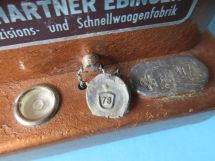
the screw that is securing the scale house
on the base plate is sealed with a 1978
labeled verification lead |
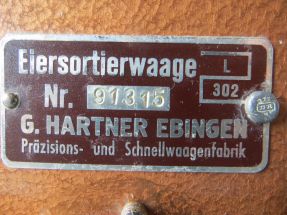
the factory plate at the right side of the scale shows
the function, the stamped identification number, and
at the right the admission sign, the angular Z,
containing L and 302 [see text above] and
finally, the manufacturer's name and location |
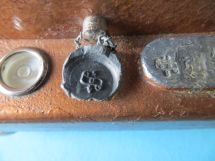
at the back of the lead seal is a
banderole of a gauging office
|
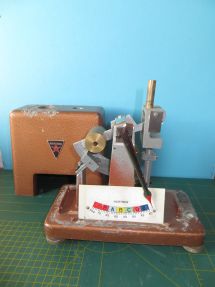
after cutting the seal and the removal
of a single screw the scale house
was dismantled and the mechanism
is clearly visible |

the parts are pretty firm
and robust
|
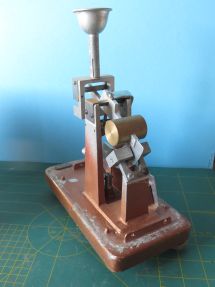
in the two holes of the upright strip on
the base plate at the front of the photo
the scale house is hooked, the screw with
the seal lead is situated at the other side |
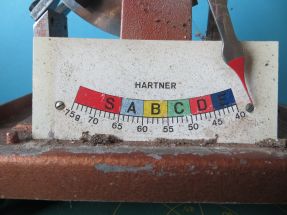
the egg scale was rather dirty and dusty
|
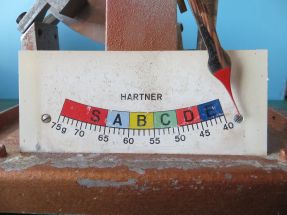
cleaned but not yet painted
|

cleaned, painted and reassembled
|
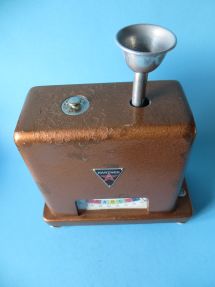
The refurbished egg scale
|

the old wear tracks are still visible
under the new coat of paint
|
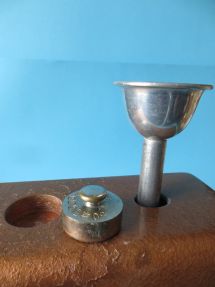
the 50 grams control weight
on top of the scale house
|
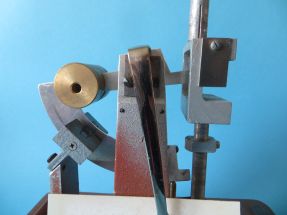
left the magnetic damping,
center and right knife edge bearings |
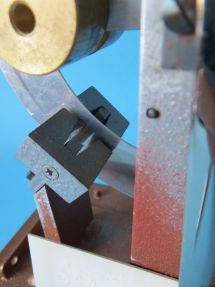
the magnetic damping ensures a
fast stop |

quite robustly constructed knife edge bearing
|
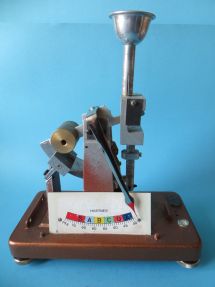
front of refurbished egg scale,
still without the scale house |
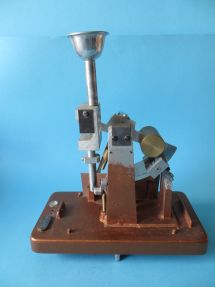
back of the refurbished egg grader
|
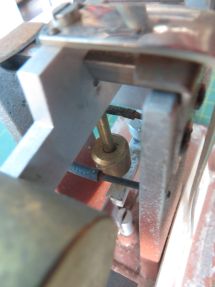
two rubber coated rods are the end
stops for the scale movement |
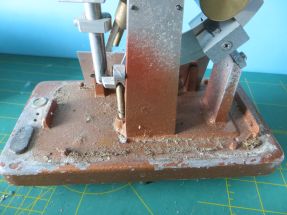
The back was also quite dirty and dusty
|

with the check weight in the egg cup
|
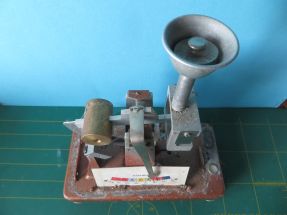
with the check weight in the egg cup
|

extensive use caused a battered house
|
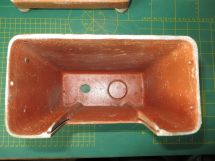
inside of the cast aluminum house
|

the glass plate is inserted from below
into the house slots
|
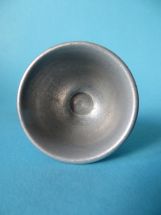
inside egg cup
|
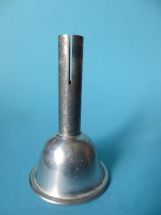
the removed egg cup
|
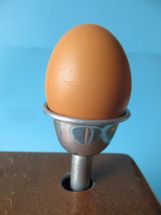
egg in the mounted egg cup
|
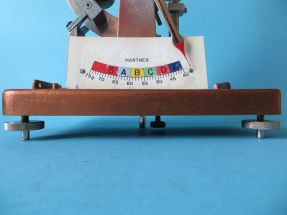
the egg scale rests on three support points, the
support at the center back is fixed and not adjustable
both front supports are easy adjustable to level the scale |
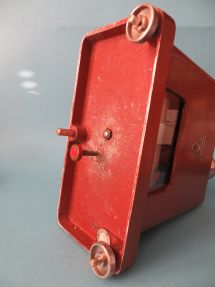
on the bottom is also the red
rotary knob for the transport safety
here maximum unscrewed = inoperative |

here the red rotary knob is turned inwards at the max,
the transport safety is thereby put into operation
|
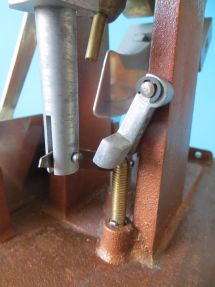
at the right the aluminum arm rests
against the vertical brass threaded rod:
the transport security is off
|
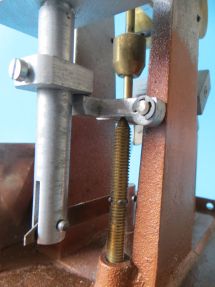
at the right the aluminum arm is maximally
pushed up by turning the brass screw rod
inwards: the transport security is in effect
|

the aluminum arm right is still clamped
while the brass screw rod is already in
off-position; move the egg cup a bit
to free and lower the aluminum arm
and so restore possibility of movement |
